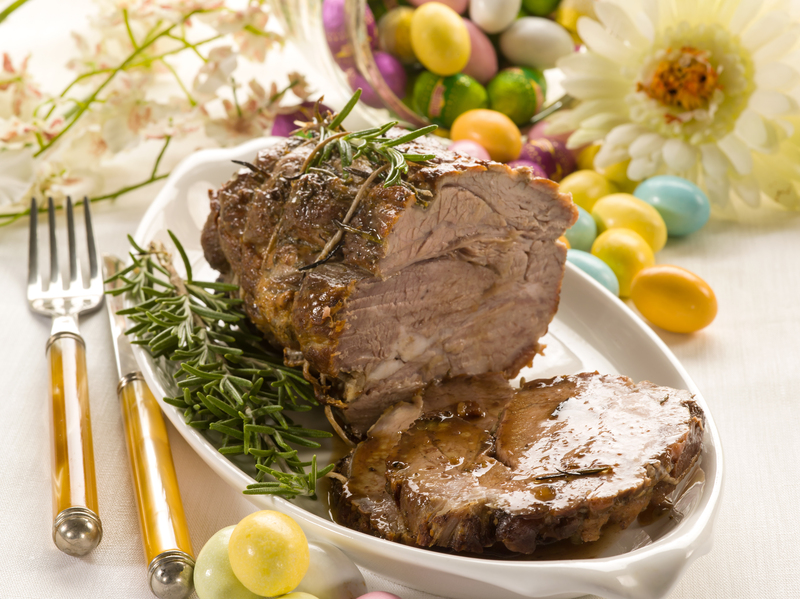Effortless Strategies to Eliminate Burnt-On Stovetop Ghosts
Posted on 02/09/2025
Effortless Strategies to Eliminate Burnt-On Stovetop Ghosts
If you've ever faced those stubborn, burnt-on stains and mysterious shadows lingering on your stovetop--often called "burnt-on stovetop ghosts"--you know how frustrating and time-consuming cleaning can feel. Don't worry! With proven techniques and practical solutions, you can banish those persistent marks and restore the gleam to your cooktop. This comprehensive guide explores effortless strategies to eliminate burnt-on stovetop ghosts, helping you maintain a spotless kitchen with minimal effort.
Understanding Burnt-On Stovetop Ghosts
Before diving into removal tactics, it's essential to understand what burnt-on stovetop ghosts actually are. These are those grey or brown "shadows" left after spills burn onto your stovetop's surface. Over time, they can make your cooktop look dirty, dull, and neglected--no matter how often you wipe it down.
Common causes of burnt-on stovetop stains include:
- Boil-overs from pots and pans
- Spilled sauces and sugary liquids
- Cooking oils and grease
- Neglected food residue
- High heat "baking" remnants onto the surface
Without proper cleaning and care, these stains become increasingly difficult to remove. But with the right approach, rescuing your stovetop is surprisingly simple.

Preparation: Essential Tools and Safety
Before you get started on your cleaning mission, gather the necessary supplies and take safety precautions. Here's what you'll need:
- Baking soda
- White vinegar
- Soft microfiber cloths
- Non-abrasive sponges
- Plastic scraper or an old credit card
- Dish soap
- Protective gloves
- Optional: Stovetop cleaner designed for your cooktop's material
Tip: Always ensure the stovetop is cool to the touch before cleaning to avoid burns or injuries.
Homemade vs. Commercial Cleaners: Which to Choose?
Many commercial cleaners exist for stovetops, but several effective--and affordable--DIY methods use pantry staples like baking soda and vinegar. When choosing, consider:
- Material: Glass, ceramic, stainless steel, and enamel each have unique cleaning needs.
- Allergies or sensitivities: Homemade cleaners are often gentler and less likely to irritate.
- Eco-friendliness: Vinegar and baking soda are environmentally friendly compared to chemical options.
Step-by-Step Strategies to Remove Burnt-On Stovetop Ghosts
1. Begin with a Gentle Surface Wipe
Start by wiping away any loose debris, crumbs, or oil residue using a damp microfiber cloth and a few drops of dish soap. This prevents you from rubbing dirt or abrasive particles into the stovetop later.
2. Baking Soda and Vinegar Method--A Magic Duo
Many homeowners swear by the baking soda and vinegar method for removing burnt-on stovetop stains. Here's how to use this powerful combination:
- Sprinkle a generous layer of baking soda directly onto the affected areas.
- Spray or gently pour white vinegar over the baking soda. The mixture will begin to fizz as it reacts, loosening hardened stains.
- Let it soak for 15-30 minutes. For tougher ghost marks, cover the mixture with a damp cloth and let it sit longer.
- Use a non-abrasive sponge or microfiber cloth to gently scrub in circular motions.
- Wipe clean with a damp, clean cloth and dry thoroughly.
This stovetop cleaning method is safe for most surfaces, but always spot-test on a small area before use--especially for glass or induction cooktops.
3. Try the Soaking Approach for Stubborn Spots
For extremely persistent stains (real "stovetop ghosts"), a longer soaking period may be necessary:
- Lay a vinegar-soaked towel or paper towels over the burnt area.
- Let it sit for one to two hours to soften and lift the residue.
- Scrape gently with a plastic scraper or an old credit card.
- Never use metal scrapers, as they can scratch the surface permanently.
4. Commercial Stovetop Cleaners: The Heavy Hitters
When home remedies aren't enough, specialty stovetop cleaners offer a targeted solution for eliminating burnt-on cooktop ghosts. Look for non-abrasive creams or gentle scrubbing pads formulated for your stove's surface--especially glass or induction models. Follow the manufacturer's directions for best results.
5. Erase Marks with a Magic Eraser
Magic erasers (melamine foam pads) can work wonders on delicate but persistent stovetop shadows. Dampen the eraser and gently rub the ghost stains away. Always use with a light touch, especially on ceramic or glass cooktops.
6. Steam Cleaning for a Chemical-Free Solution
If you have a handheld steam cleaner, it's a brilliant tool for tackling built-up grime:
- Apply steam directly to stains, softening them for easy removal.
- Quickly wipe away residue with a microfiber cloth as you go.
- This method is particularly good for eliminating burnt-on stovetop ghosts without chemicals.
7. Polish for a Streak-Free Shine
Once all visible stains are removed, finish by polishing your stovetop:
- Buff the surface using a clean, dry microfiber cloth.
- For glass or stainless steel, a few drops of vinegar can boost the barely-there, streak-free finish.
- Repeat regularly to prevent the return of stovetop ghosts.
Smart Prevention: How to Stop Stovetop Ghosts For Good
Eliminating stains is only half the battle--prevent reappearance with these effortless prevention strategies:
Daily Wipe Down
- After each use, wipe the stovetop with a damp cloth to remove any food or spills before they can burn on.
Use Drip Trays or Burner Liners
- Install removable liners under burners or in drip pans to catch and contain messes--these are easy to wash or replace.
Watch the Heat
- Cooking on lower to medium heat minimizes splatter and reduces the risk of food burning onto the surface.
Immediate Attention
- Don't let spills sit--clean up as soon as it's cool enough to do so, before they harden into stubborn marks.
Regular Deep Cleaning Routine
- Establish a weekly or bi-weekly deep clean, addressing any emerging stains quickly.
What Not to Do When Removing Burnt-On Stovetop Marks
As vital as knowing what works is knowing what to avoid when cleaning your stovetop. Never:
- Use metal scrapers or knives that can gouge your cooktop, causing lasting damage.
- Attack stains with steel wool or abrasive pads--they may remove coating and cause discoloration.
- Apply harsh chemicals (like oven cleaner or ammonia) unless specifically approved for your stovetop type.
- Submerge electric or gas stovetop parts in water--always follow the manufacturer's guidance.
Best Practices for Different Stovetop Types
Glass and Ceramic Stovetops
- Always use non-abrasive products and sponges.
- Avoid excessive force or scrubbing, which scratches delicate surfaces.
- After cleaning, buff with a soft, dry cloth for a shine.
Gas Stovetops
- Remove burner grates and clean them separately with soapy water.
- Use a toothbrush to clear hard-to-reach crevices.
- Wipe the stovetop with vinegar and baking soda to tackle grease and ghost stains.
Electric Coil Stovetops
- Detach and clean drip pans regularly.
- Use a damp cloth for the main surface, and never submerge electrical elements.
- Baking soda and vinegar remain safe for most enamel finishes.
Effortless Maintenance: Keeping Your Stovetop Ghost-Free All Year Long
Consistency is the secret to a pristine stovetop. With minimum investment of time, the following habits will ensure those persistent stovetop ghost shadows never haunt your kitchen again:
- Wipe daily to keep spills from hardening.
- Address new stains immediately before they bake on.
- Deep clean weekly using the above effortless strategies.
- Use liners and splash guards to catch surprises before they touch the surface.

Frequently Asked Questions: Burnt-On Stovetop Ghosts
Q: Can lemon juice help remove burnt-on stovetop stains?
A: Yes, lemon juice's natural acids can help loosen light burnt-on stains, especially if combined with baking soda. Apply, let sit, and wipe clean for mild cases.
Q: What's the best way to clean induction cooktops?
A: For induction and glass cooktops, always use non-abrasive cleaners and soft sponges. Avoid anything that could scratch or damage the sensitive surface.
Q: Why do stains keep coming back after I clean them?
A: Incomplete removal, repeated cooking over small residues, or skipping regular maintenance can allow stains to persist. Deep clean, polish, and practice daily prevention to break the cycle.
Conclusion: Restore Your Stovetop to Its Former Glory
"Burnt-on stovetop ghosts" are a common, unwelcome presence in kitchens everywhere--but they don't have to be a permanent fixture. With these effortless, practical strategies, you can say goodbye to unsightly marks and hello to a sparkling, inviting cooking space. The right mix of home remedies, commercial products, and preventative care will keep your stovetop looking new, meal after meal. Start today--and never be haunted by stovetop ghosts again!




